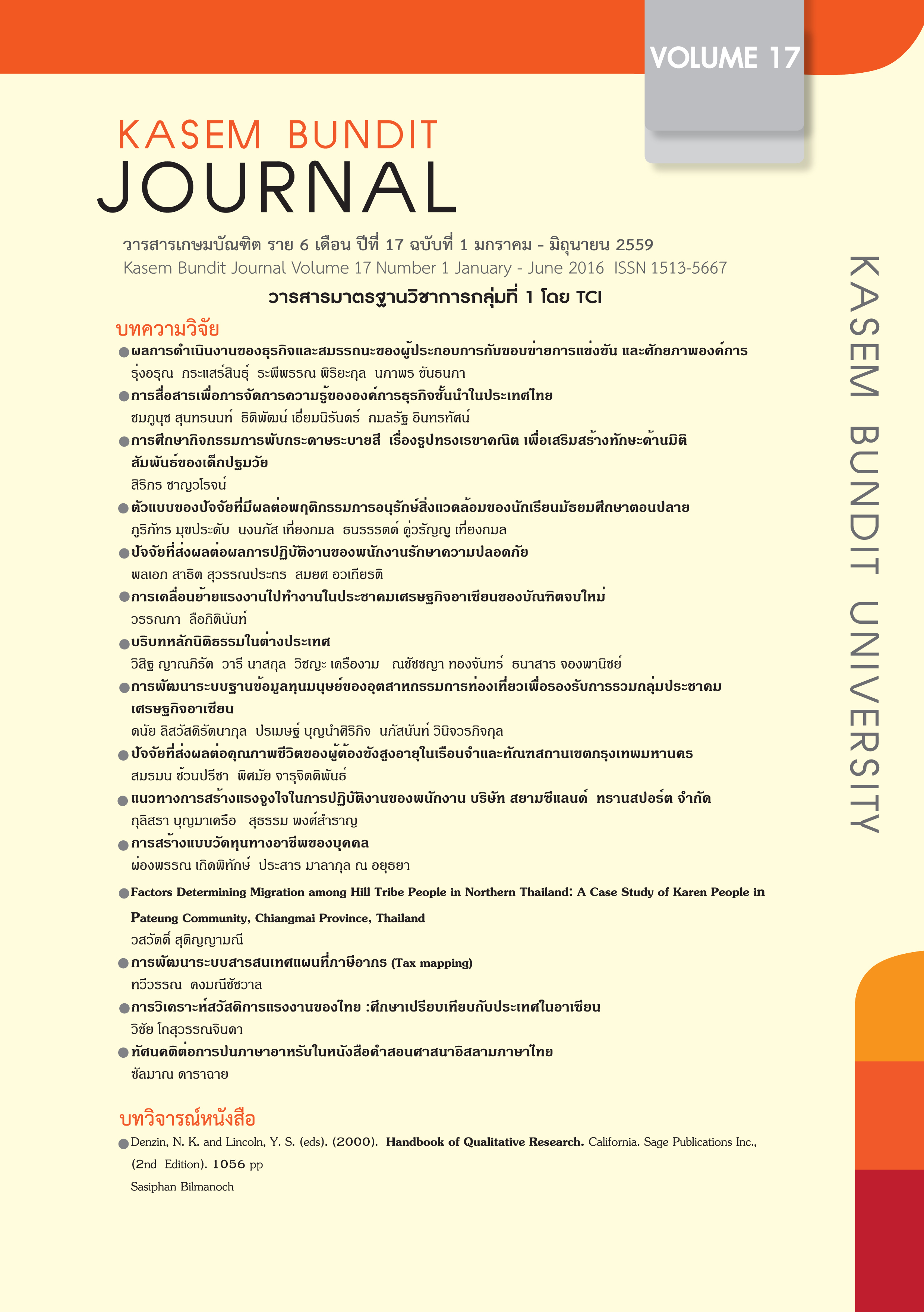การเคลื่อนย้ายแรงงานไปทำงานในประชาคมเศรษฐกิจอาเซียนของบัณฑิตจบใหม่; Job Mobility of New Graduates in ASEAN Economic Community
Keywords:
ประชาคมเศรษฐกิจอาเซียน การเคลื่อนย้ายแรงงาน ผู้จบการศึกษาใหม่ ASEAN Economic Community, Job mobility, New graduatesAbstract
บทคัดย่อ
การวิจัยการตัดสินใจไปทำงานในประเทศที่ตั้งอยู่ในภูมิภาคอาเซียนของบัณฑิตจบใหม่ โดยใช้แบบสอบถามสำรวจความคิดเห็นจากบัณฑิตที่จบการศึกษาในระดับปริญญาตรี คณะการจัดการและการท่องเที่ยว มหาวิทยาลัยบูรพา จำนวน 860 คน ผลการวิจัยพบว่าสัดส่วนของบัณฑิตที่คิด และไม่คิดไปทำงานในประเทศที่ตั้งอยู่ในภูมิภาคอาเซียน มีสัดส่วนใกล้เคียงกัน โดยประเทศที่บัณฑิตคาดว่าจะไปทำงานในอนาคต 3 อันดับแรก คือ สิงคโปร์ มาเลเซีย และบรูไน สำหรับปัจจัยที่มีอิทธิพลต่อการตัดสินใจไปทำงานในประเทศที่ตั้งอยู่ในภูมิภาคอาเซียนมากที่สุด คือ ความต้องการพัฒนาตนเอง ต้องการความรู้ใหม่ๆ และมีประสบการณ์เพิ่มขึ้น และปัจจัยที่มีอิทธิพลน้อยที่สุด คือ ภาระการรับผิดชอบดูแลครอบครัว เช่น ต้องดูแลพ่อแม่ เมื่อให้บัณฑิตประเมินทักษะทางด้านภาษาต่างประเทศ พบว่า นิสิตมีความพร้อมในระดับปานกลาง
Abstract
The study aimed to investigate the decision to work in ASEAN Economic Community (AEC) of new graduates. Questionnaires were employed to survey the opinion of 860 new graduates with a bachelor’s degree in the Faculty of Management and Tourism, Burapha University. It was revealed that the proportion of new graduates who wanted to work was equal to those who did not want to work in AEC. The 3 most favorite countries which new graduates wanted to work in the future were Singapore, Malaysia and Brunei respectively. The most important factor influencing job mobility was the need to get new knowledge and to acquire new experiences. The least important factor influencing job mobility, on the other hand, was family responsibility. In addition, foreign language skill of the graduates was moderate.
Downloads
How to Cite
Issue
Section
License
ทัศนคติ ความคิดเห็นใด ๆ ที่ปรากฏในวารสารเกษมบัณฑิตฉบับนี้เป็นของผู้เขียน โดยเฉพาะ มหาวิทยาลัยเกษมบัณฑิตและบรรณาธิการ ไม่จำเป็นต้องมีความเห็นพ้องด้วย







